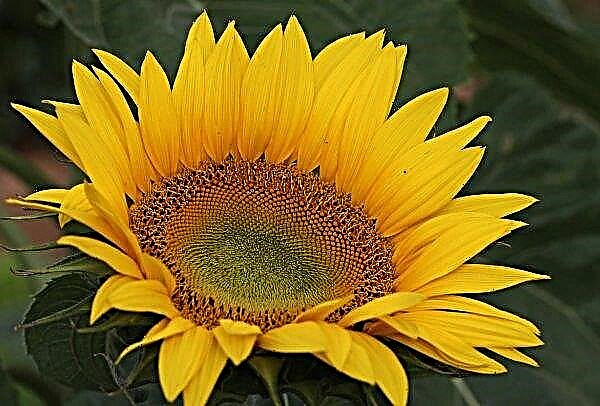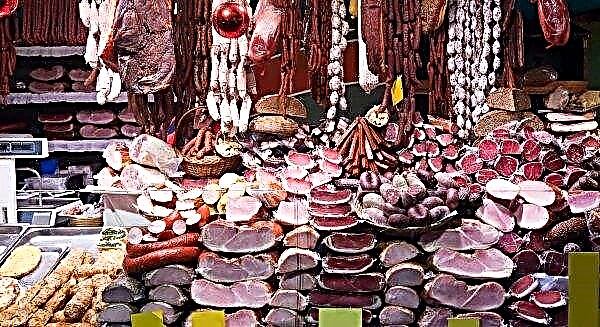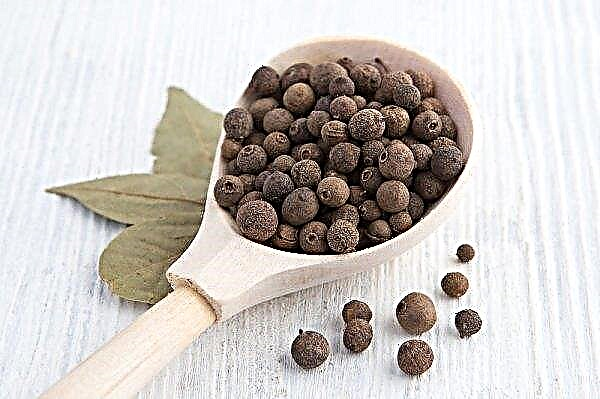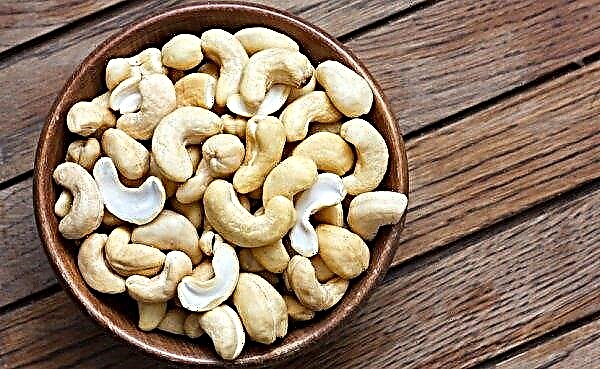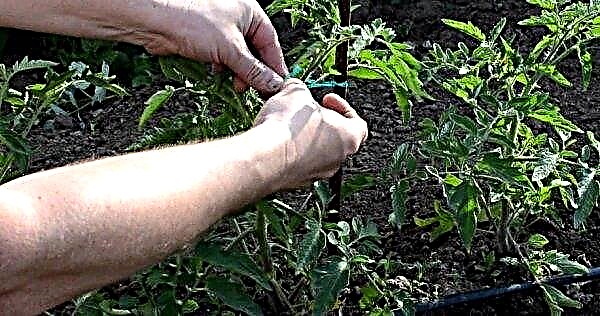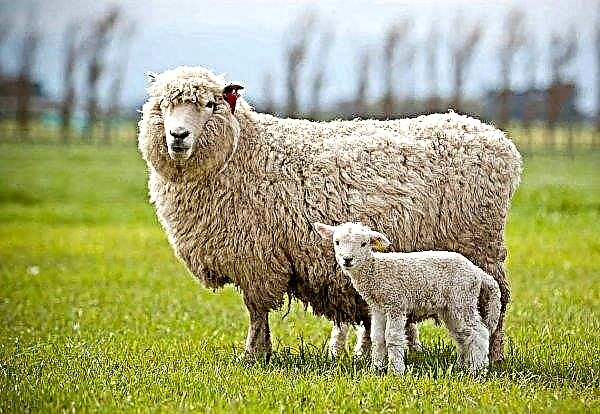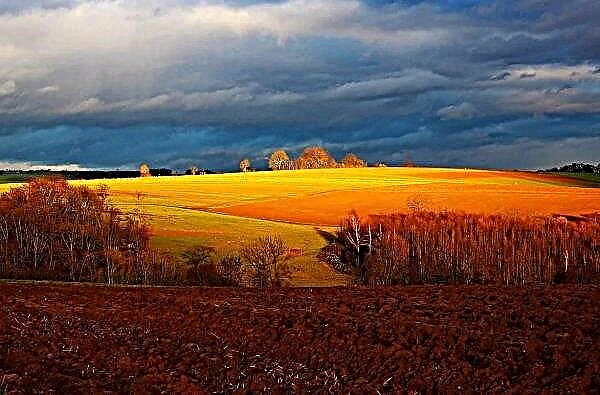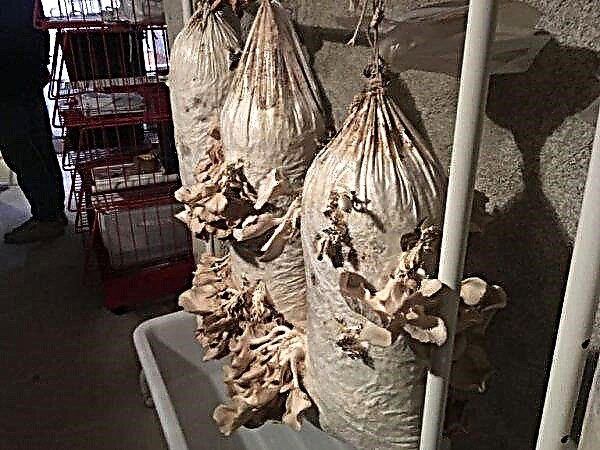Increasingly, hydrangea can be seen in almost every garden plot, on a flower bed, in the form of hedges, walls, arches, etc. After all, this shrub is quite unpretentious, has beautiful fragrant flowers, and has high decorativeness. There are about 80 species of this culture in the world, and every year new varieties appear that can be grown even in regions with harsh climate conditions. In this article, you can find information about varieties suitable for planting in the suburbs.
Description and origin of the bush
According to archaeological excavations, hydrangea appeared several thousand years ago and grew in the territories of America, Alaska, Asia, and China. In Europe, this shrub appeared only in the XYIII century thanks to the English botanist and naturalist Joseph Bonks, he brought it from China. In the 20th century, French breeders were the first to breed new varieties, and by the middle of the century there were about 100.
A brief description of the culture:
- perennial, deciduous, ornamental plant;
- hydrangea can be of various types - shrubby 1-3 m high, like a small tree, climbing creepers up to 30 m long;
- the leaves of some varieties are 10 cm long, smooth, dark green or silver-green, roundish, pointed at the end, heart-shaped, serrated edges;
- shoots of a red-brown hue, with short aerial roots and suction cups, with their help are attached to the surfaces;
- the flowers are white-pink, creamy white, corymbose, 10–20 cm in diameter, pollinated by bees, melliferous, with a light aroma. Blooming violent, lasts from June to August inclusive.
Did you know? The scientific name of hydrangea (lat. Hydrangea) in the meaning — "Vessel with water."
Popular types and varieties
One of the most popular hydrangea varieties that take root and grow well in the Moscow Region are Cordifolia, Petiolaris, Winter Surprise, Silver Lining, Take and Chance, Miranda. In more detail about the features of these species - later in the article.
Cordifolia
Cordifolia is a dwarf type of culture, slow growing, about 1.5 m high. Leaves are rounded, up to 10 cm long, glossy, dark green. The flowers are white, flat, thyroid, with a delicate honey aroma. The shoots are thin, reddish-brown.

Petiolaris
Petiolaris is a fast-growing, frost-resistant, highest grade of hydrangea. Branched vines, 20–25 m long, short aerial roots are formed on them, with the help of which they can weave up or spread on the ground, growth for one season is 0.5–1 m. Shoots are red-brown in color, young growths are light green. The bark is scaly. Leaves are rounded, shiny, serrated on the edge with a pointed tip, dark green color.

The flowers are large in diameter of 15–20 cm, corymbose, creamy white, fragrant. The flowering is plentiful, begins in July and lasts until August. Prefers half-shaded places.
Important! The peculiarity of the curly liana is that by means of dyes, white colors can be given a different shade. You can tint hydrangea flowers with coloring agents, they are sold in gardening stores, or aluminum sulfate, fertilizers with potassium, phosphorus, and nitrogen content also affect the color.
Winter Surprise
Winter Surprise is a frost-resistant variety with a length of about two meters. The flowers are white in color, the time for flowering occurs in May - June. The leaves are dark green-red, glossy, covered with small fibers, in the fall they turn purple or burgundy. The shoots are long, flexible, burgundy brown. It can be used as a climbing tree or as a ground cover shrub.

Silver lining
Silver Lining is a new petiole variety, the length of vines is about 5 m, in diameter the bush reaches 3 m. The leaves have jagged edges, decorated with a white border, rounded, silver-green, young leaves of light green. Strong green shoots, dense crown. White flowers, corymbose, collected in inflorescences, with a diameter of 15–20 cm, have a honey aroma. Blooms in the middle of summer. It grows well in sunny and shaded places, it is quite frost-resistant up to -25 ° C.

Take & Chance
Take & Chance - the height of the plant reaches 6 m, shoots are red-brown, flexible, green leaves, 5-10 cm long, oval in shape, smooth, edges with small serrations, edged with marble-white color, in some cases, the leaves may acquire a light color. Inflorescences are racemose, with a diameter of about 20 cm, fragrant, white or cream. It is resistant to diseases and pests, frost resistance.

Miranda
Miranda - this variety, thanks to the aerial roots formed on the vines, rises to a height of about 10 m, seasonal growth - about 0.5 m. Shoots are light brown with scaly bark. The flowers have a creamy white hue, thyroid, form in inflorescences, with a very sweet aroma, the flowering period begins in July.

Decorative leaves are wide, glossy, pointed, dark green with uneven pale green or yellow-cream border. It can grow in partial shade, frost hardy.
Landing
The choice of a healthy seedling, the correct planting and the appropriate preparation of a place for planting - all these factors favor good growth and development of culture.
Did you know? In the language of floristry, hydrangeas symbolize devotion, sincere feelings and a declaration of love.
Seat selection
When choosing a territory for planting hydrangeas, you need to consider such moments:
- pick up a place protected from cold and strong winds;
- many varieties of plants are photophilous (although many can grow in partial shade), respectively, and the landing area should be illuminated;
- due to the fact that the root system of the culture is superficial, it is better to choose a territory without large trees growing closely, because they absorb a lot of moisture, and there may be a lack of water and nutrients;
- the soil should be well-drained, moist, with a groundwater level of 1.5 m.

Soil preparation
For good plant growth two to three weeks before planting, it is necessary to prepare the soil:
- Dig the land in the selected area, remove all weeds along with the roots.
- The plant prefers moist, acidic soils, well breathable, rich in nutrients. If they are heavy clay or loamy, then you need to add organic fertilizers (peat, rotted manure, large river sand, conifer needles, turf) in equal proportions, 20 kg of mixture is enough for 1 m². Everything should be well dug up, leveled.
- The color of the inflorescences will depend on what level of acidity: the higher it is, the richer and brighter the flower. To maintain or increase acidity, it is recommended to use ammonium sulfate or special preparations for acidification.
Did you know? In Japan, at the foot of Mount Togari, the Kougenin Temple is located; more than a million hydrangea flowers grow on its territory. You can admire their beauty for free, since admission is free.
Landing rules
The best time for planting hydrangea seedlings in regions with a harsh climate is spring. When planting shrubs, you need to follow this scheme:
- They dig a hole 20 × 20 cm, a depth of 20–40 cm. The distance between the bushes is 1.5–2 m, and between the rows - 2.5 m.
- They make a drainage, for this it is necessary to pour expanded clay, gravel or crushed stone at the bottom of the recess, the layer thickness is 10 cm.
- After adding fertile soil with humus or compost (10 kg), superphosphate (50 g), potassium sulfate (40 g), mix well, watered with water.
- Place the seedling in the hole, straighten the roots, the root neck should be 3-4 cm above the ground (after watering it will fall), fall asleep, tamp, abundantly watered (15 l of water).
- Mulch the trunk circle with peat, sawdust or small bark.

After landing care
Performing proper hydrangea care after planting will increase its lifespan. To do this, it is necessary to plow the soil and weed weeds, feed and irrigate the shrub, spray, put backwater and make sanitary and forming pruning.
Watering
Hydrangea is a moisture-loving culture; therefore, it requires regular irrigation (20-30 liters of water for each adult shrub), in the dry season and in the summer - 2 times in 7 days. If the trunk circle is covered with mulch, then you can water it once every 7 days. It is better to use water, rain or tap water, well settled and warmed up.

Plant nutrition
Feeding is carried out in several stages, both chemical preparations and organics are used.
- In the spring, after the beginning of the vegetative period, urea (20–25 g), Superphosphate (30–40 g), Sulfur potassium (30–35 g) are scattered under the bush, they are dug up the soil afterwards and watered abundantly for better absorption of nutrients.
- In the period of budding, feed “Superphosphate” (60–70 g), “Potassium sulfate” (40–45 g), dig up the earth, moisten it, you can cover the trunk circle with mulch.
- At the end of summer or the beginning of autumn organic matter is introduced (overripe manure or compost 15–20 kg for one bush).
Important! All the specified amount of fertilizer is applied per 1 m².
Pruning
For better growth and formation, it is necessary to do sanitary pruning, as well as to give the shrub a beautiful crown shape. It is carried out in spring or autumn, damaged, frozen and dry branches, shoots that contribute to bush thickening, dried flowers are removed. In addition, it is recommended to conduct anti-aging pruning, this applies to branches that are more than 5 years old, covered with weak and thin shoots, such branches are cut out at the base, the cut points are covered with garden varnish.

For the young vines
Young seedlings the first three years after planting require careful care. They need to be hilled, fertilized, regularly watered, but not to allow stagnation of water or drying out of the soil, to plow around the trunk, to remove weeds. A special condition is shelter for the winter.
Winter preparations
These varieties of hydrangeas are considered frost-resistant and tolerate winter well, but still experienced gardeners advise holding a series of events that contribute to a more efficient wintering of culture:
- Cut dried flowers, broken and damaged branches.
- Remove the fallen leaves, dig around the trunk circle and cover with a peat layer about 5-7 cm.
- The branches need to be wrapped with rope, bent to the ground, pressed with brackets, covered with agrofibre, breathable burlap or lapnik.

Breeding
To purchase new young seedlings of varietal hydrangea, it is not necessary to buy them. After all, this plant lends itself well to reproduction, and it is easy to carry out at home. Many gardeners recommend several fairly simple, effective methods of propagation by cuttings, dividing the bush, layering. Detailed instructions for carrying out these works are described below.
Cuttings
The propagation process by cuttings is recommended to be done in mid-summer before the onset of flowering, and it is done like this:
- It is necessary to cut last year's healthy branch, divide it into cuttings about 15 cm long with 2-3 pairs of leaves. Remove the bottom pair of sheets, shorten the next two by half, and process the bottom cut with Kornevin.
- Mix peat and sand (2: 1) in a container, moisten, make holes in it, plant cuttings 5 cm apart, cover with a greenhouse film or plastic caps.
- In the future, it is necessary to regularly water 1-2 times a week, in hot weather - every day. It is better to store seedlings in a shaded place with an air temperature of + 18 ° С ... + 20 ° С.
- After 25-30 days, the root system should appear and grow new leaves. Seedlings are recommended to be planted in separate containers for better root development. In open ground, they can be planted in a year.
Layering
This breeding method is carried out in this way:
- In the spring, before the onset of the vegetative period, on the growing shrub, select annual strong shoots.
- Near the bush, dig grooves (one ditch is needed for one branch) about 10-15 cm deep, pour fertile soil with peat into it, bend cuttings to its bottom (in the place where the shoot will be in the ground, you can make an incision and treat it with “Kornevin »), Pin with pegs or brackets, sprinkle with earth, water well.
- After young shoots appear, they need to be huddled, regular watering should also be carried out, the soil should be loosened, weeds should be removed, and fertilizing should be done.
- After a year, they can be separated from the mother bush and planted in open ground.
Dividing the bush
For this method of reproduction, it is necessary to carry out such actions:
- Water the bush abundantly, leave for several hours, so that the plant is saturated with moisture, and the earth is well saturated.
- Around the near-trunk zone of the plant, remove the topsoil, then step back 25-30 cm from the trunk, dig a deep ditch in diameter (this is necessary for digging hydrangea and not to damage the root system).
- To take out a bush together with a lump of earth, you can wash off the soil, carefully divide it into several parts and plant it (the planting scheme is described above in the article) in pre-prepared planting pits, water, mulch.
 The method of propagation by dividing the bush is best suited for shrub and dwarf species of culture, also in this way you can transplant to another place.
The method of propagation by dividing the bush is best suited for shrub and dwarf species of culture, also in this way you can transplant to another place.
Pests and diseases
Common diseases of petiole hydrangea include the following:
- Chlorosis - There are several sources of the onset of this disease (viruses, fungi, vector pests), it can also occur when there is a lack of minerals in the soil (iron, magnesium). Leaves prematurely turn yellow and fall, the growth activity of shoots decreases, the tops dry out. With non-infectious damage, special fertilizers will help, with infectious - infected plants are destroyed.

- Gray rot - this disease affects the whole plant, gray-brown dry spots appear on it, over time they become wet and become covered with a coating. Measures to combat the disease include spraying with solutions of Fitosporin-M, Alirin-B, Euparen multi, Fundazalom. Affected parts must be cut and burned.

- White rot - fungal disease caused by the fungus sclerotonia. It first affects the roots, then the whole plant. The ground part is covered with white coating, and the underground part is covered with mucous mass; in wet weather, the bush rot and die. In the fight against the disease use Topsin, Previkur, Ridomil Gold, Profit Gold.
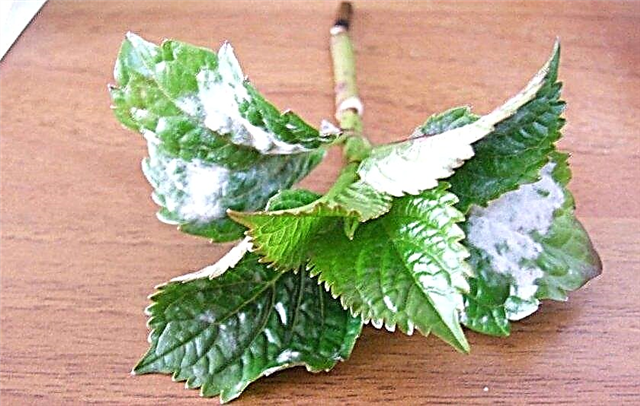
- Gall nematodes - small worms with a length of about 2 mm, affect the roots, swellings appear on them, which eventually rot and die. You can fight these pests with the help of the preparations "Nematofagin BT", "Nematorin", "Bassamil".
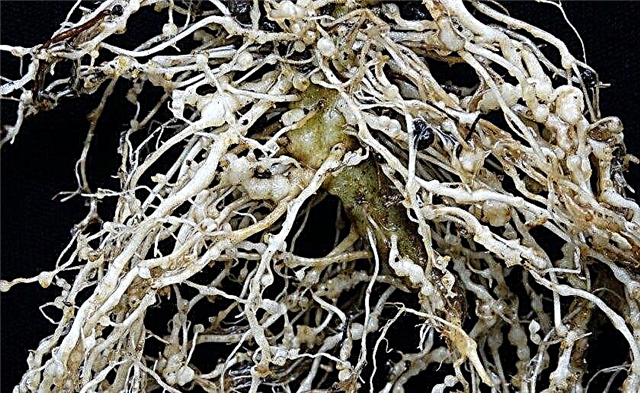
Petioles hydrangea in landscape design
Petiole shrub is widely used in landscape design, it is used to form green hedges, flowering barriers, adorn arbors, arches and pergolas (awnings), walls. It can grow without supports, like a groundcover, creeping plant. Planted both singly and in groups with other flowering crops or perennial herbaceous plants.
Petiole hydrangea, climbing, groundcover or climbing vine is very unpretentious in care.It is only necessary to adhere to the rules of cultivation, carry out preventive work in a timely manner, then it will give your garden a special charm, become a good decoration and will delight you with its flowering and magnificent appearance.Did you know? In Buddhism, tea from hydrangea leaves is considered a ritual drink, during the festival of Khan Matsuri they are watered with a statue of a newborn Buddha.






